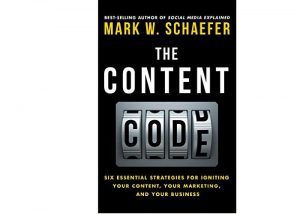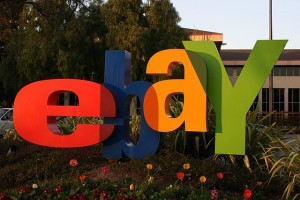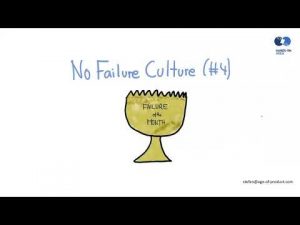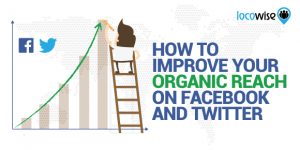The SaaS industry is now worth $ 116 billion worldwide. According to Analytical Research Cognizance, the market will grow at a compounded annual growth rate of 21% until 2023. Gartner predicts that combined revenue from SaaS companies will hit $ 278 billion within three years.
Capterra, one of the most prominent user review websites for enterprise SaaS platforms, now lists more than 70,000 offerings in 700 business categories. In such a crowded marketplace, it is difficult for SaaS companies to differentiate themselves.
In 2004, psychologist Barry Schwartz published The Paradox of Choice, detailing how having too many options causes people not to make a decision at all. If people see three types of jam on a supermarket shelf, they will be more likely to buy one than if they see ten options.
Now, take Capterra’s CRM software category. There are 587 different platforms. 587! In such an environment, how can product teams stand out? By not falling victim to “decision paralysis” when potential customers ignore you because the choice is overwhelming.
Be as “sticky” as you can
“Stickiness” is essentially the percentage of people that return to using your app.
You never get a second chance to make a first impression – even in the enterprise SaaS world. Usually, stickiness is an aspect of user experience that B2C product teams are great at optimizing for. In the B2B space, it’s less commonly what product people aspire to, although that’s starting to change.
In the enterprise space, product functionality sophistication usually trumps stickiness on the priority list, which, in my opinion, is a golden opportunity to differentiate. Having co-founded successful B2C apps and now setting my sights on the B2B sphere with Torii, it’s been clear to me from day one that it’s critical to put stickiness at the center of everything we do.
Keep the end-user in mind
The best products are those that delight users consistently, so you always need to have your finger on the pulse of what your end users are doing in the context of your app – and what they want to achieve with it.
If you’re working on B2C apps that have mass market appeal, it’s easy to obtain feedback from users simply by keeping an eye on your metrics. You can make incremental adjustments to your features or interface, and if thousands of people are using your product every day, then you will know within hours if the adjustment was an improvement or not.
But when you’re dealing with B2B products, especially those from early-stage startups, you don’t have as much volume of engagement metrics to lean on, so the data is less clearly conclusive. It’s a quantitative vs. qualitative data issue.
That’s why it’s important to have regular calls with your user base. Over the past year, I’ve made sure to speak with at least five of my customers every week. The feedback I receive in these conversations – especially leading up to, and following, product changes – is invaluable.
But let’s not confuse optimizing for repeat visits and page impressions, which mistakenly can be considered as stickiness, with optimizing for the value actually delivered to the user by you product. This differentiation in goals and KPIs is even more critical when it comes to B2B products. Make sure that your quantitative and qualitative feedback systems provide you with the insights that you need for the KPIs you’re actually after.
Welcome them aboard
Another key aspect of user-centricity is making sure to optimize the onboarding process for new users, so that people get a taste of the value your product delivers right off the bat.
Make the introduction to your SaaS product so interesting, valuable and welcoming that people will be genuinely excited to use the product. But – and this is important – keep it short and simple. Highlight the major offerings with a quick, interactive tour without going into every single detail.
And the first rule in writing also applies to products: show, don’t tell.
Have a seamless UX
Uber does not come with a lengthy user manual. People immediately pick up on how to use it. If the app weren’t accessible, people around the world wouldn’t have taken an estimated 10 billion paid rides to date using Uber.
The point is: If a user cannot quickly figure out how to use your app and how to get value from it, then the UX design has failed. After the onboarding process, the product should be intuitive and obvious.
Only if the use of the SaaS product is smooth and fast, can stickiness truly be achieved.
Remember to have fun
The B2B world is supposed to be boring, right? Well, just look at Slack. This product takes work chat and turns it into the world’s go-to space for corporate communication and sharing fun. It organizes the communications by channels for group discussions while allowing colleagues to send private messages, videos, GIFs, animations, images, and emojis. In short, it is a UX that encourages people to have fun.
Perhaps this is why Slack has been experiencing record-breaking growth figures in the business sector. Its stickiness is in the positive feeling it instills in people when they use this SaaS product.
Historically, so much of product creation and marketing in the B2B world focuses on cold, dry functionality. The old methods are starting to change now, since at the end of the day, users are flesh-and-blood human beings with emotion-driven brains. The latest research from Binet and Fields shows how B2B marketing is actually not that different from B2C.
Look at it this way: How different is your enterprise SaaS platform from the ones your competitors offer, really? Take password management tools for example. They all pretty much do the same thing, so the UX alone can make one stand out. It is the feeling and emotion that makes the brand experience just as important as what the product does.
Take it easy with notifications
I do not think I have received a useful Facebook notification for months. A lot of Twitter users feel the same way.
I get reminders that random people are at random events near me but not about people commenting on important threads I am following.
One obvious use of notifications is to trigger desired actions. But be careful: If your target audience doesn’t see the value in those notifications, then your SaaS app might become as annoying as Facebook is today.
Notifications should not only help your company’s goals but also add value for the user. One of the worst things for a product is for people to block all notifications because they became too numerous or intrusive.
The greater context
The benefit of well-designed enterprise SaaS apps is that they are quick to sign up for and easy to use. But that is also the drawback. In most modern companies, any department can choose, sign up for and instantly use numerous tools, and be as quick to stop using them or replace them with the newly released alternative.
This leads to the increasing fragmentation of technology systems in organizations and eventually to inability to control the budget and plan it as well as multiple security and compliance gaps.
Enterprises can literally have hundreds of (sometimes overlapping) applications being used by employees – all of which adds to the complexity of their IT infrastructures. The need to manage this rampant SaaS use has given rise to specialized management solutions to wrangle SaaS use throughout dynamic, growing organizations.
It’s possible that only inefficiency is fueling the golden age of SaaS growth that we’re currently experiencing. Who knows – if more companies start using fewer SaaS products in the name of killing redundancies and waste, it’s possible that fewer SaaS providers will be able to remain afloat. Most categories do not need more than a few competitors, especially given that the core functionalities are often the same.
In that environment, the best way to stand out from the competition will be to have a seamless, fun UX – and then no potential user will ever have decision paralysis.
Business & Finance Articles on Business 2 Community
(28)








